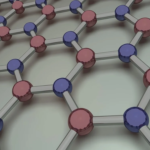Category Archives: hexagonal boron nitride
Luminescence in hexagonal boron nitride single layer: exciton-phonon coupling and the role of substrate

In this new work we study luminescence in monolayer hexagonal boron nitride (m-hBN) using a new ab-initio approach that takes into account the effects of atomic vibrations on the luminescence spectra. We construct the dynamical exciton-phonon self-energy, then use it to perturbatively correct the optical response functions and test this approach on bulk hBN as… Read More
A squashed and squeezed h-BN
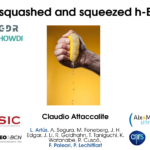
In this seminar I present new thoeretical and exparimental results on hexagonal-boron nitride under isotropic pressure and uni-axial strain. In particalar we focused on the changes in the optical response both absortion and emission. We show how exicton behave under these extreme conditions.The presentation can You can downloaded here: A squashed and squeezed h-BN [ODP]
Theory of phonon-assisted luminescence
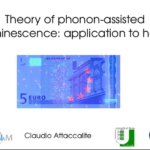
In this presentation I present the theory of phonon-assisted luminescence, in terms of non-equilibrium Green’s functions and time-dependent perturbation theory. We derived a simple formule for light emission in the limit of low excited carriers including excitonic effects and then included coupling with phonons by time-dependent perturbation theory. This approach is then applied to the… Read More
Luminescence of hexagonal boron nitride explained
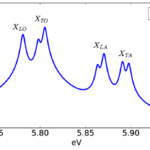
Luminescence of hexagonal boron nitride (hBN) has puzzled researchers for long time. In standard solid state physics textbooks direct band gap semiconductors are considered efficient light emitters while indirect ones are regarded as inefficient. Hexagonal boron nitride seems to defy this rule. In fact hBN emits light in the ultraviolet with an efficient comparable to… Read More
Direct and indirect excitons in boron nitride polymorphs: a story of atomic configurations and electronic correlation
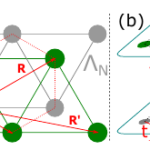
In this work we study how different atomic configurations, and electronic correlation modify the exciton dispersion in hexagonal boron nitride. We use two different approaches, ab-initio DFT plus many-body perturbation theory and tight-binding. We found that in the case of AB-stacking electronic correlation inverts the nature of the optical gap, from indirect to direct respect… Read More
Two-photon absorption in two-dimensional crystals
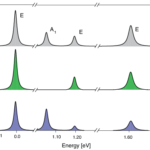
In this work we combine tight-binding calculations of the two-photon transition probability with sophisticated ab-initio real-time Bethe-Salpeter simulations of the two-photon resonance third-order susceptibility. This combination is a unique feature of this work: on the one hand the tight-binding calculations allow us to identify the symmetry properties of the excitons, on the other hand the… Read More
Invisible excitons in hexagonal Boron Nitride
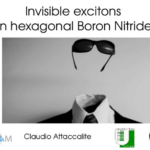
New talk for the conference “2D layered materials for opto-electronics: a theoretical/computational perspective” in Rome. In this work we study excitations in hexagonal Boron Nitride that are invisible in linear optical response. We show that these dark states can be measured with other spectroscopic techniques and they play an important roles in the luminescence response… Read More
Exciton interference in hexagonal boron nitride
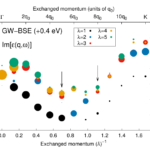
Our new paper on exciton interference in hexagonal boron nitride is online. In this paper we show that the excitonic peak at finite momentum is formed by the superposition of two groups of transitions that we call KM and MK′ from the k-points involved in the transitions. These two groups contribute to the peak intensity… Read More
